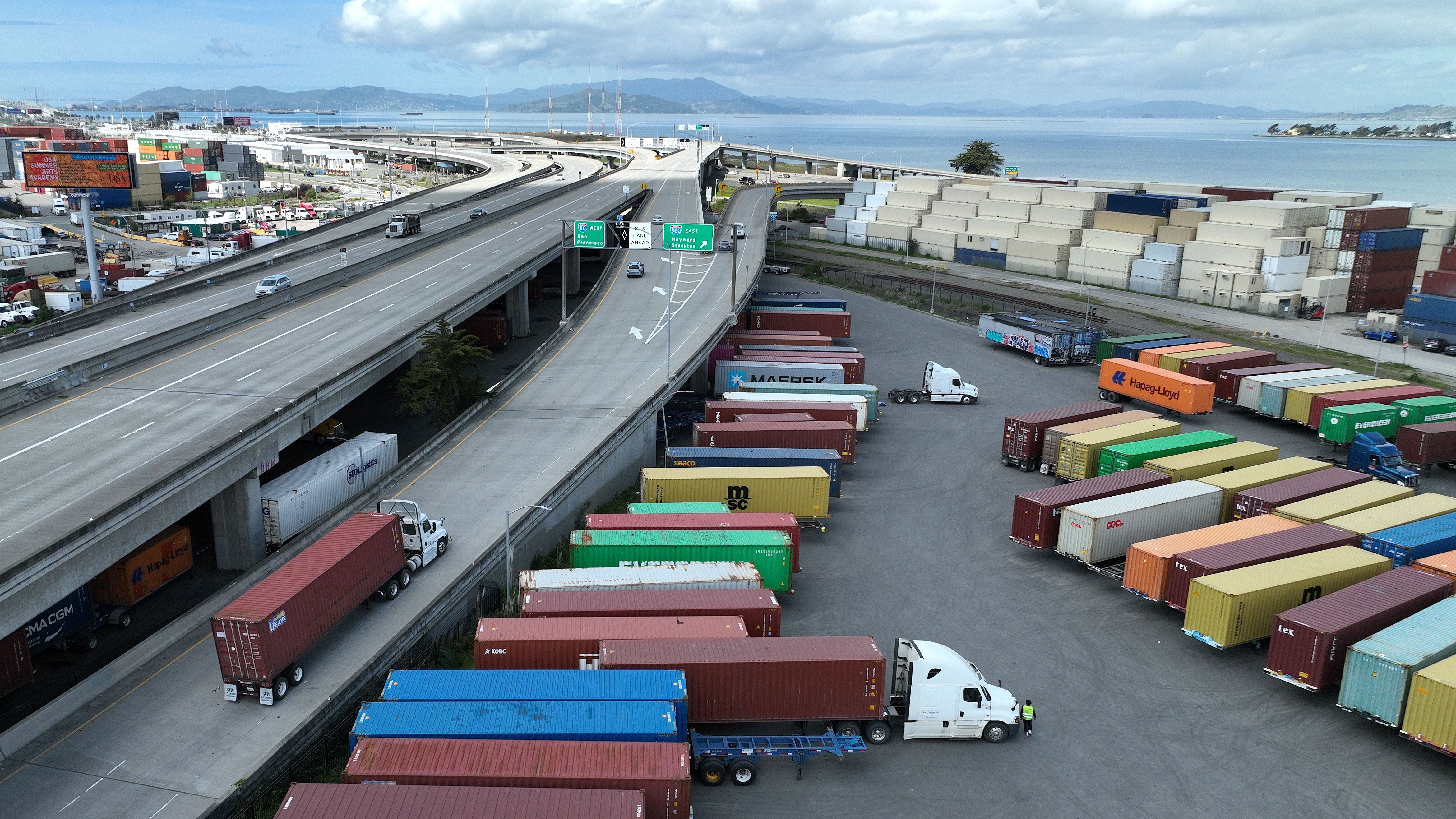

Published on: 03/29/2024
This news was posted by Oregon Today News
Description

The Biden administration has approved the strictest-ever limits on greenhouse gas emissions from heavy-duty trucks. Public health and environmental advocates are celebrating the move as a boost to zero-emission trucks, while some trucking organizations are criticizing it as unfeasible given current infrastructure.
The standards cover a wide array of vehicles, from city buses and box trucks to garbage trucks and 18-wheelers. The rules apply to manufacturers, and while it's up to manufacturers to choose how to comply, they are widely expected to lean heavily on battery-powered vehicles.
Combined with separate Environmental Protection Agency rules restricting other pollutants from heavy trucks, the slate of rules — for model years 2027 through 2032 — are meant to address both carbon emissions that drive climate change and the soot and smog that directly harms human health.
"On behalf of everyone who breathes, thank you," Paul Billings of the American Lung Association said during an EPA press briefing.
Heavy-duty trucks have an outsize environmental footprint; larger industrial vehicles make up about 5% of the country's vehicle fleet, but 20% of transportation emissions.
The rules were first proposed last year. After collecting comments from the public and industry, the EPA adjusted the final rule to kick in more gradually in the next few years and becomes more stringent in the early 2030s.
Zero-emission heavy-duty trucks exist today, but are more expensive than traditional diesel vehicles. The EPA says that despite the upfront cost, over time the rules will save fleet owners money in reduced fuel and maintenance costs. Some drivers and fleet operators disagree with that assessment and have denounced the rule as unrealistic and expensive.
"We are concerned that the final rule will end up being the most challenging, costly and potentially disruptive heavy-duty emissions rule in history," Jed Mandel, the president of the Truck and Engine Manufacturers Association, said in a statement, while maintaining that truck manufacturers "are committed to a zero-emission future" for trucking.
"This administration appears more focused on placating extreme environmental activists who have never been inside a truck than the small-business truckers who ensure that Americans have food in their grocery stores and clothes on their backs," said Todd Spencer, president of the Owner-Operator Independent Drivers Association, in a statement.
Light-duty vehicles just got their own rules
Last week, the EPA finalized rules governing tailpipe emissions from light- and medium-duty vehicles — cars, SUVs, vans and most pickup trucks.
Those rules were also the subject of intense lobbying, and the final standards were tweaked to accommodate automakers' concerns. It was still strict enough that the EPA expects by 2032 more than 50% of new light-duty vehicles will be fully electric, and two-thirds if you count plug-in hybrids.
That's a lot more EVs than the EPA expects heavy-duty vehicle manufacturers to sell. That's because light-duty vehicles are much easier to electrify than heavy-duty ones — they are, well, lighter, which means smaller batteries. And they're easier to charge; powering a gigantic truck takes a daunting amount of energy.
"One charging site for a heavy truck fleet could use as much power as the Empire State Building," says Matt Horton, CEO of EV charging station developer Voltera. Still, he says, that technology exists, and the EPA's rules are a boost to businesses like his because they provide some "certainty in the market" to help make long-term plans around investments.
It's not just the cost of building charging stations — the grid itself needs to improve and expand to support additional demand.
Some heavy-duty vehicles are harder to clean up than others
A school bus that's parked most of the day. A garbage truck with its daily route. A long-haul tractor-trailer on the road for hundreds of miles in a day.
They're all heavy-duty vehicles — but they're different beasts when it comes to cutting emissions.
Already, battery-powered vehicles can handle shorter, consistent routes, especially ones that allow for easy recharging at a depot. The Biden administration is funding all-electric school buses, for instance, which appeal to school districts — and also reduce school-age children's exposure to diesel fumes.
On the other end of the spectrum, long-haul trucking remains a significant challenge. Battery-powered big rigs and hydrogen-powered trucks are the two main candidates. Hydrogen trucks are quicker to refuel, but so far, not cost-effective, and would require brand-new infrastructure to make and distribute that hydrogen. Batteries, meanwhile, are so heavy it would reduce how much cargo truckers could haul, aside from the charging challenges.
The EPA says it factored those challenges into this rule. The agency predicts no significant sale of zero-emission sleeper cab trucks until 2030, and even then, they would be a small fraction of the market. Trucks that travel shorter routes, meanwhile, would be expected to shift toward zero-emission models faster.
Is it feasible? Manufacturers, drivers and some fleet operators disagree
Health organizations like the American Lung Association strongly support these standards as a life-saving measure. Green groups, like the Environmental Defense Fund, celebrate them as a win for the climate and characterize them as perfectly feasible.
The oil industry and biofuels industry, meanwhile, have both objected, citing not just feasibility questions but energy security and cost efficiency as reasons to avoid regulations that penalize the internal combustion engine.
And what does the trucking industry think? Well, it's complicated.
"We are opposed to the rule in its current form," says Jacqueline Gelb, vice president of energy and environmental affairs at the American Trucking Associations. "But we're going to continue to work with the EPA."
Gelb says while the EPA did relax the early years of the restrictions, the ATA, which represents trucking companies, still has serious concerns about what the rules would mean for the bottom line.
Other industry voices are blunter. "We are nowhere near ready for electric vehicle trucks, and I doubt we will ever be," Monte Wiederhold, a fleet owner who's active in the Owner-Operator Independent Drivers Association, told the EPA last year. Critics of the regulations say they could push drivers to keep their existing diesel trucks for longer, eroding health benefits from cleaner, new trucks for sale.
On the other hand, some large public companies that operate large fleets of trucks, like Amazon and DHL, have publicly embraced zero-emission trucks as part of their climate targets. Those two companies are part of a group that actually pushed for the rules to be even more stringent.
Then there are the truck manufacturers — the companies that are directly regulated by this rule. They are investing billions of dollars in making zero-emission vehicles and have publicly set targets for zero-emission vehicle sales. A few, like Ford, pushed for even stronger emissions regulations to promote those vehicles.
But they also emphasize they can't control how quickly charging infrastructure gets built out.
"We cannot afford a scenario where manufacturers must sell zero-emission vehicles, but fleets won't purchase them because there's no infrastructure in place to operate them," Jed Mandel of the Engine Manufacturers Association told the EPA last year. "That is a recipe for disaster."
Copyright 2024 NPR. To see more, visit https://www.npr.org.
News Source : https://www.opb.org/article/2024/03/29/epa-heavy-trucking-rule-emissions/
Other Related News
04/28/2024
Candace Parker a three-time WNBA champion two-time league MVP and two-time Olympic gold m...
04/28/2024
At least four people were killed and dozens suffered injuries in multiple states after a s...
04/28/2024
Jalen Brunson scored a career playoff-high 47 points added 10 assists and the New York Kni...
04/28/2024
At the first sound of music cheers and cries of cheehoo a celebratory chant originating in...
04/28/2024










